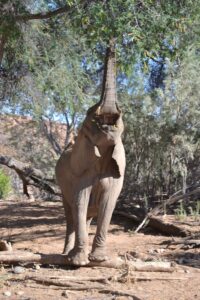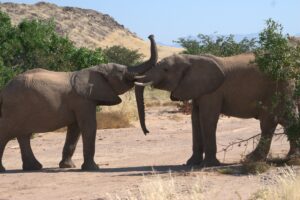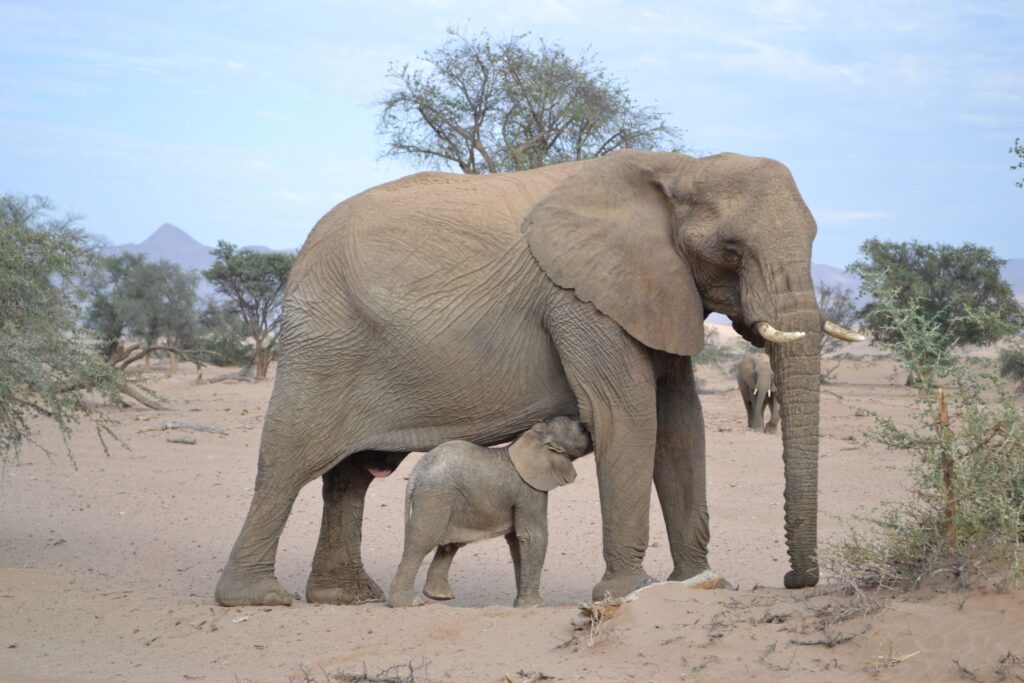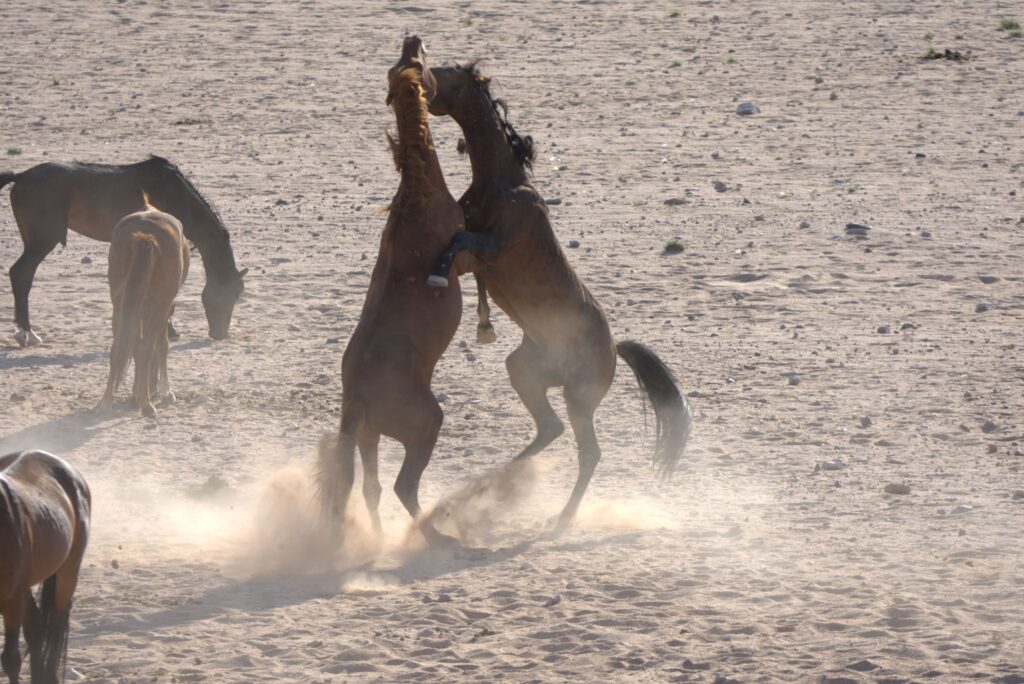The Desert Elephants of Namibia
Namibia’s desert elephants are a unique population of African elephants (Loxodonta africana) that have adapted to survive in the harsh, arid conditions of the Namib Desert. They are a remarkable example of adaptation and resilience, inhabiting one of the driest environments that any elephant population lives in. While not a separate subspecies, desert elephants have evolved distinct traits due to their environment.
Compared to savanna elephants, they have slightly longer legs and smaller bodies, which may help them cover longer distances with reduced energy use and conserve water. Their feet are slightly broader, which helps them move across sandy terrain more easily. Desert elephants have developed a tolerance for going without water for several days and may cover large distances (up to 70 km) between water sources. They also dig for water in dry riverbeds, using their trunks to access groundwater. This desert adaption makes them unique and memorable.
These elephants follow specific migratory routes that can span hundreds of kilometers, tracing ancient paths to find water and food sources. They feed on moisture-rich plants such as the Faidherbia albida (ana tree), Acacia, and Salvadora persica (toothbrush tree), which provide some of the hydration they need. Their diet includes roots, shrubs, and small trees to adapt to the limited vegetation available. Desert elephants tend to form smaller herds compared to their savanna counterparts, a strategy that reduces competition for scarce resources.
Namibia’s desert elephants are primarily found in the Kunene Region, specifically in areas like the Hoanib, Hoarusib, and Ugab river valleys. These ephemeral river systems provide critical water sources during the dry season, as the rivers flow sporadically after rare rainfalls. Their habitat consists of rugged mountains, rocky terrain, and sandy riverbeds. They rely heavily on these dry river systems, which act as “desert highways” and offer food and water during the driest times of the year.
Namibia’s desert elephants face threats from human-wildlife conflict, especially as they may damage property or water infrastructure in their search for resources. They also face habitat loss due to increasing tourism and agriculture in the area. Occasionally, droughts pose severe risks, as they can significantly reduce water and food availability.
Desert-adapted elephants are now protected under Namibian law, and sustainable tourism in the Kunene Region is encouraged to support conservation.



Conservation of Namibia’s desert elephants
The conservation of Namibia’s desert elephants is crucial, as they are a small, unique population that has adapted to survive in one of the world’s harshest environments. Several conservation strategies have been implemented to protect them while also addressing the needs of local communities.
Community Involvement: In Namibia, the government has established communal conservancies that empower local communities to manage and benefit from wildlife tourism. This model allows communities to benefit economically from tourism, providing an incentive to protect elephants rather than seeing them as a threat to livelihoods.
Reducing Human-Wildlife Conflict: These conservancies help mitigate conflicts between elephants and communities by using income from tourism to compensate for damages caused by elephants or to fund protective infrastructure, like elephant-proof water pumps and storage tanks.
Tracking Movements: Conservation organizations, such as the Desert Elephant Conservation group and the Elephant-Human Relations Aid (EHRA), use GPS collars to monitor the elephants’ movements.
Protection of Key Water Sources: Efforts are made to preserve the few water sources in the Kunene region’s dry riverbeds, which are crucial for desert elephants’ survival.
Restoring Natural Water Points: In some cases, organizations restore or establish natural water points to ensure that elephants and other wildlife have access to water during the driest times of the year.
Human-Wildlife Conflict Mitigation: To protect human communities and reduce confrontations, elephant-proof fences are installed around farmlands, water infrastructure, and residential areas.
Eco-Tourism Initiatives: Desert elephant conservation is partially funded by eco-tourism. Sustainable tourism programs run by local conservancies provide jobs and revenue for the community, which motivates locals to protect elephants.
By combining local and international support, government policy, community involvement, and scientific research, Namibia has created a multifaceted approach to conserving its desert elephants. This strategy allows both elephants and human communities to coexist sustainably in this unique ecosystem.


